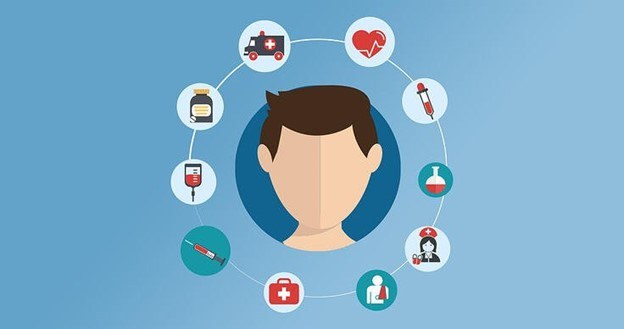
Healthcare has been one-sided for years; clinicians have been given all or most of the power when it comes to decision-making. However, in a world driven by consumerism, people in search of care are no longer viewed as patients, but as customers. Nowadays, we are following the UK’s NHS-driven philosophy of “no decision about me, without me.” Patients want to be more involved in their health, and, as recent studies have shown, patient outcomes improve when the patient and the doctor collaborate on future care regimens. Because of this, more and more healthcare practices are adopting a patient-centered method of care.
What is it?
Patient centricity is designing a treatment, clinical trial, or alternative health solution around a specific patient1. This method focuses on the individual, rather than a group or population. It also allows patients to align their care around personal preferences and empowers them to take charge of their own health.
Switching to this method brings several benefits to both the patient and the practice:
- Establishes Trust
Running a healthcare practice is like running any business – retention is important. When providers engage their patients, they gain their trust. The better the relationship, the more likely the patient will come back to your facility.
- Builds Reputation
When patients are satisfied, they are likely to leave a review and/or tell their friends and family about you, thus helping you grow your practice.
- Improves Staff Morale
Generally, healthcare professionals get into medicine because they are sincerely passionate about working with and helping others. Communicating with patients is their favorite part, and when you give them the ability to share ideas, the staff will be more satisfied, more efficient, and less likely to experience burnout.
- Reduces Costs
A 2014 study showed that patients who participated in patient-centered programs had a 9% lower total cost than those who participated in traditional fee-for-service care models. They were also 8% less likely to admit into a hospital and 5% less likely to end up in the emergency room.2
- Improves Outcomes
Obviously, it is important to follow-through with whatever treatment plan is assigned to you by your doctor. However, patients (and people in general for that matter) do not like being told what to do. If treatment plans are cooperated on, patients would become more encouraged to stick to the regimen, thus improving outcomes.
Providers’ Role
It is the doctor’s job to involve the patient as much as possible through communication, shared-decision-making, and education about their disease/illness. It is important the patient know the severity of their condition and why they must follow up on their treatments. Patients teach back is an effective strategy to use, as it makes the patient repeat the information back to them, to ensure they have a high level of understanding3.
Because there is a direct correlation between patient satisfaction and outcomes, the relationship between patients and their providers must be a strong one. A 2017 survey from the Council of Accountable Physician Practices (CAPP) found that consumers believe patient-provider relationships are the single most important factor in quality care. Once the two parties establish trust, the patient will be more likely to follow through on their regimens.
Technology’ Role
Technology can play a large role in creating a positive experience. Wearables and mobile apps can track vital signs and other health information such as daily steps, calories, heart rate, and more! Having this data available at all times increases health awareness and can even motivate the patient to, depending on their current fitness level, get or stay in shape. Advanced wearables can help patients control more serious diseases. For example, diabetic patients can attach sensors to their body that inform them when their blood sugar is at an irregular level.
Through Electronic Health Records, physicians can access a patient’s complete medical history with a single click. Having that much data could seem overwhelming, but with help from artificial intelligence (AI) and machine learning algorithms, doctors can design care that accommodates to the specific patient, instead of simply assigning a standard plan. Doctors can also use said data to predict likely health paths in patients and cater their upcoming treatment plans to avoid any future issues. Since AI assists physicians with mundane tasks such as data entry, they can use their extra time to build relationships with patients, thus improving satisfaction rates.
Healthcare is not a ‘one size fits all’ tactic; every patient is unique, and providers must assign treatments according to their needs. By adopting a patient-centered approach, we can create not only a more interactive care system, but a healthier and safer one as well.
Cantata Health Solutions is dedicated to promoting active patient centricity. Through engagement techniques and considering the social determinants of health, we can achieve whole-patient care. We put people at the center and are committed to a patient-centered future.
……………………………………………………………………………………………………………………….
REFERENCES
1) Ryerson, Nancy. “What Is Patient Centricity in Clinical Trials?” Clinical Trial Patient Recruitment, 29 September.
2) “The Benefits of Patient-Centered Care.” Welkin Health, 21 July 2020.
3) Heath, Sara. “3 Key Traits of a Positive Patient-Provider Relationship.” PatientEngagementHIT. 22 Nov. 2017. PatientEngagementHIT. 23 Jan. 2019.
